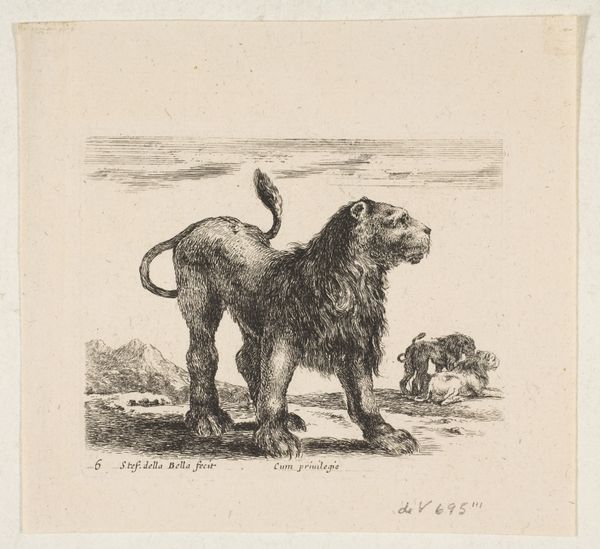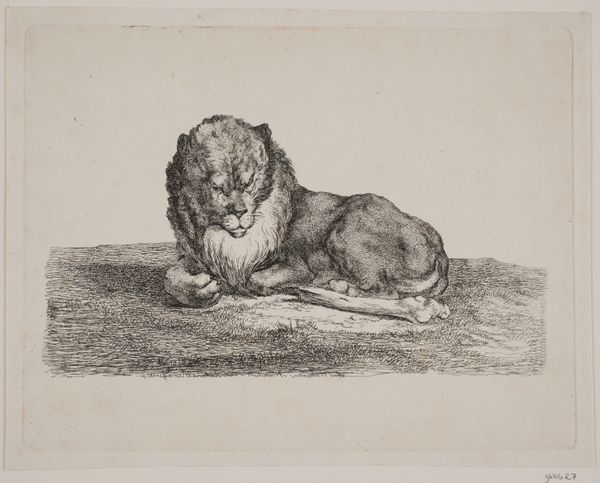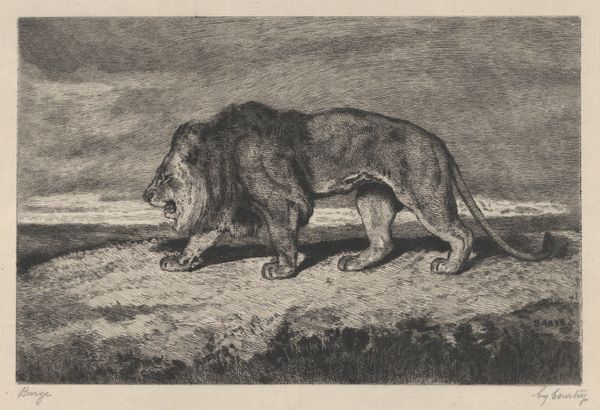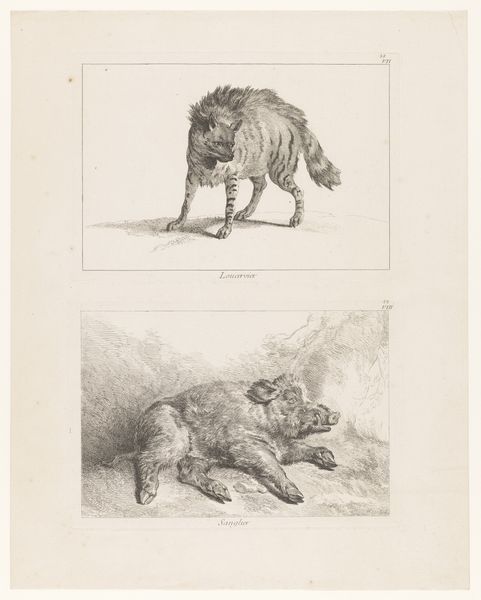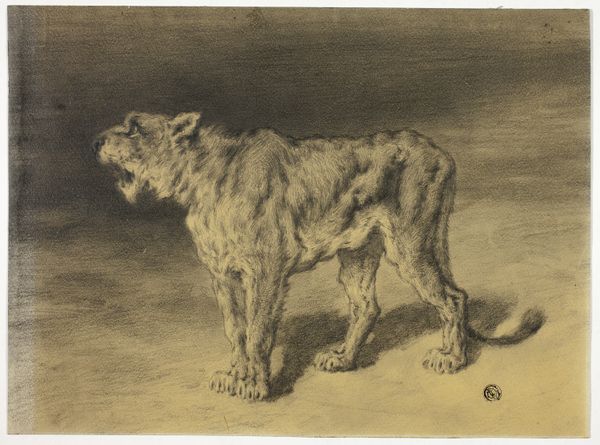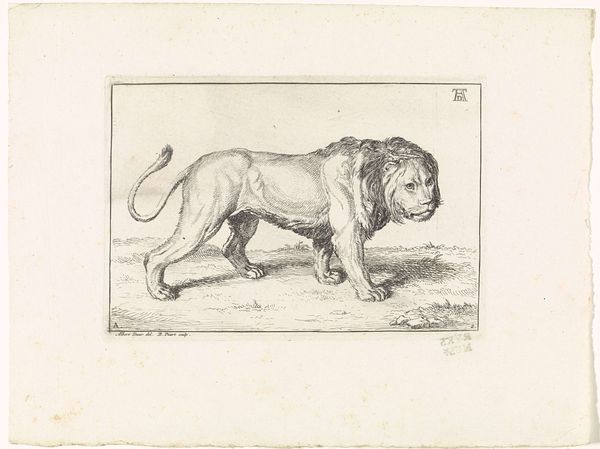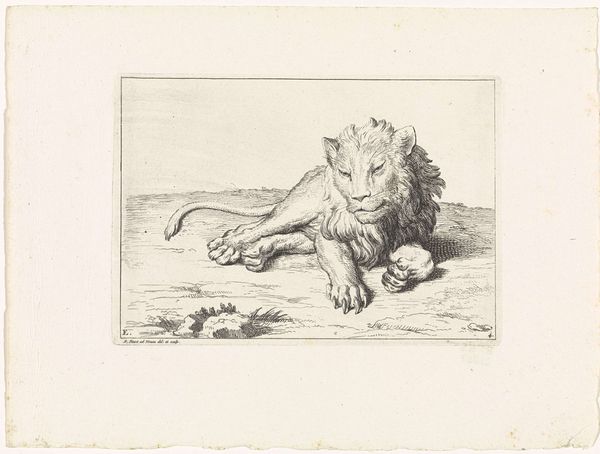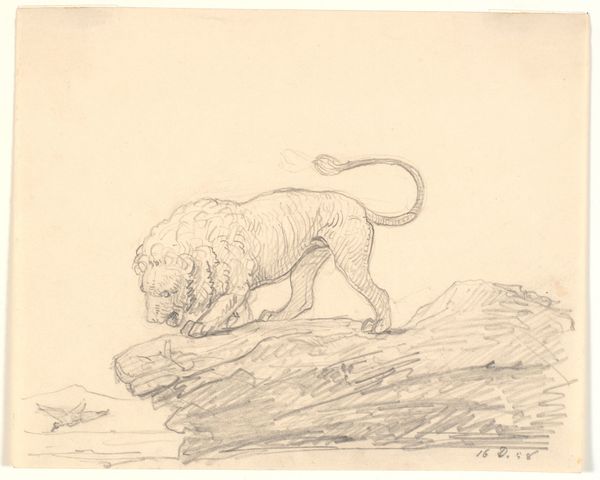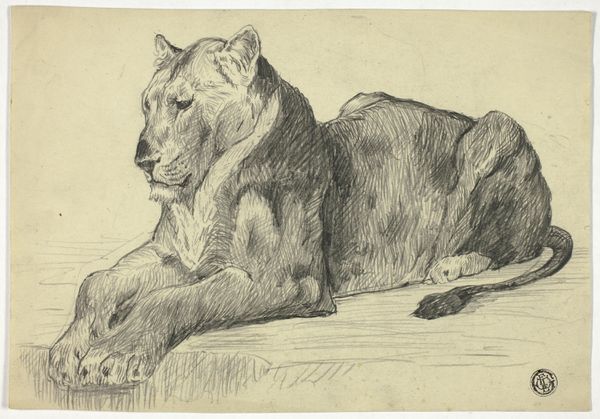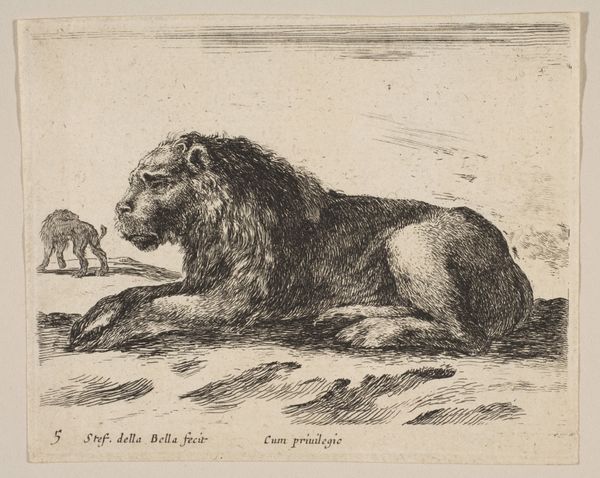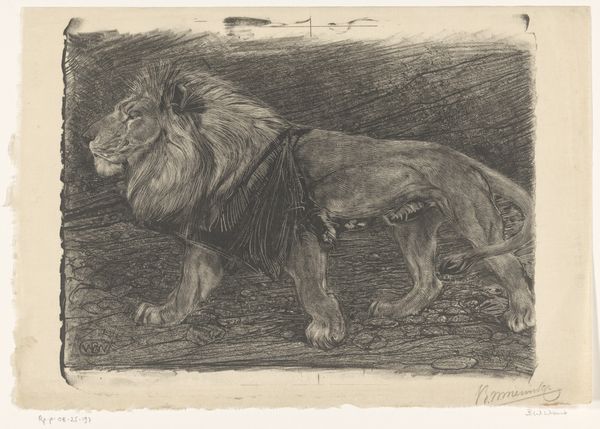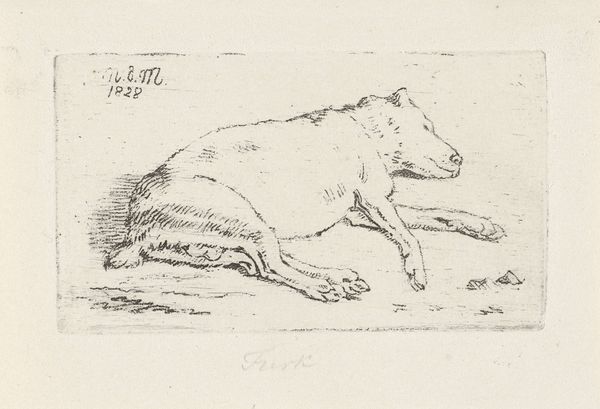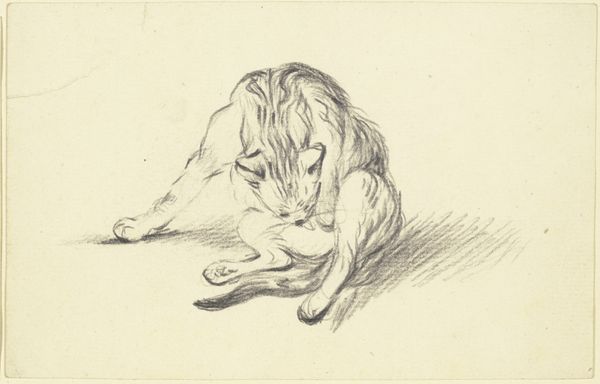
drawing, print, pencil
#
drawing
# print
#
pencil sketch
#
landscape
#
figuration
#
romanticism
#
pencil
Dimensions: Image: 5 11/16 x 5 5/16 in. (14.5 x 13.5 cm) Sheet: 10 5/8 x 7 in. (27 x 17.8 cm)
Copyright: Public Domain
Editor: So, this is Eugène Delacroix's "Lion Standing," a pencil drawing from 1833, now at the Met. It's quite intense! The lion has this powerful, almost confrontational stance. What do you make of it? Curator: This drawing is a window into Delacroix's fascination with raw, untamed power, but also how we, as humans, perceive that power. Consider the lion as a symbol. Across cultures, it represents courage, royalty, even divinity. Yet here, it's presented with a vulnerability; the pencil sketch lends a sense of immediacy, of capturing a fleeting moment of animalistic rage or defensiveness. Does that vulnerability shift your initial reaction? Editor: I hadn't really considered vulnerability, more like... a warning? But you're right, the sketchy lines do soften the image. Does that contribute to the Romanticism aspect? Curator: Absolutely. Romanticism prized emotional intensity and a return to nature. The lion becomes less about literal representation, and more about the symbolic weight of its primal nature. Look at the stance. It's a preparatory drawing; how does that impact our understanding of a finished painting’s symbolism versus this initial sketch? Editor: It feels rawer, more honest, maybe. Like seeing the artist's thought process. A finished piece would be more deliberate. Curator: Precisely. And that raw quality connects to something deeper. It reminds us that even symbols of power can reflect our own anxieties and emotional landscapes. How interesting that an image from nearly 200 years ago continues to elicit such varied interpretations today! Editor: That’s true; thinking about it symbolically adds so many layers to a simple animal drawing. Thank you!
Comments
No comments
Be the first to comment and join the conversation on the ultimate creative platform.
